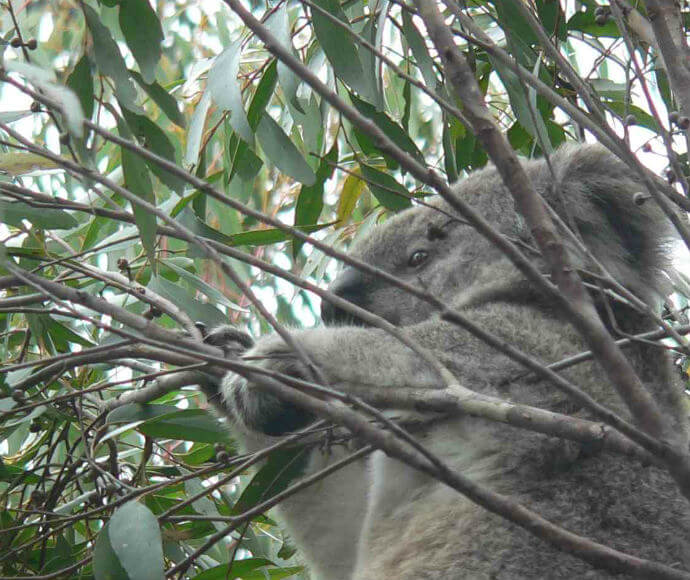Koala conservation programs, policies and legislation
NSW Koala Strategy
The NSW Government has delivered a whole-of-government NSW Koala Strategy to stabilise and then start to increase koala numbers.
Under the Strategy, the government will deliver actions under 4 pillars:
- koala habitat conservation
- conservation through community action
- safety and health of koala populations
- building our knowledge and education.
Learn more about the NSW Koala Strategy.

Koala (Phascolarctos cinereus) at Mumbulla
Go to NSW Koala Country to find out how you can help koalas.
The Restoration and Rehabilitation, Environmental Research and Protecting our Places Grants under the NSW Environmental Trust have supported many successful projects conserving koala habitat.
The Environmental Trust has awarded more than $7.6 million of funding from 1 July 2017 through to 30 June 2020 for koala conservation projects and habitat acquisition.
On 8 March 2021, the NSW Government announced a new koala habitat policy framework to protect koalas and their habitat and the interests of farmers. The State Environmental Planning Policy (Koala Habitat Protection) 2021 (Koala SEPP 2021) commenced on 17 March 2021.
- Learn more about the Koala Habitat Protection SEPP.
- Read the Koala SEPP local government area list.
The koala is listed as ‘vulnerable to extinction’ under the Biodiversity Conservation Act 2016 because of declining numbers and the ongoing pressure of threats. Such a listing gives the species more protection and attention, and means proposals for development that will affect koala habitat are rigorously assessed.
NSW koala recovery plan
The 2008 recovery plan for the koala outlined conservation actions to support the koala in New South Wales. These actions included:
- habitat management
- community education
- monitoring, research and mapping.
The Biodiversity Conservation Program and associated Saving our Species conservation projects have replaced individual species recovery plans. Recovery of threatened species is now being coordinated through the Saving our Species program, with funding of $100 million provided by the NSW Government between 2016 and 2021.
Saving our Species has developed a 5-year project for the conservation of koalas in New South Wales. Find out about the iconic species project.
In April 2012, koala populations in Queensland, New South Wales and the Australian Capital Territory were listed as vulnerable to extinction under the Commonwealth Environment Protection and Biodiversity Conservation Act 1999 (EPBC Act). For more information on the national conservation status of the koala, see:
The Department of Climate Change, Energy, the Environment and Water (DCCEEW) is undertaking koala monitoring and research to:
- identify population trends
- understand threats and develop actions to reduce these threats
- prioritise conservation activities
- support local government in the preparation and implementation of koala management plans.
Recent research activities include:
- coordinating koala surveys in south-eastern New South Wales to determine the status of the various populations and identify priority areas for management – this research will establish baselines for future koala monitoring, assist with predator control programs and help with fire planning
- undertaking a study with the University of Sydney to determine the genetic status of the Southern Tablelands population
- evaluating the success of tree planting by farmers and the NSW Government in the last 20 years to provide habitat for the local koala populations on the Liverpool Plains around Gunnedah, and in Eden
- collating existing research to form a picture of koala populations across the state and examining the changes in the distribution of koalas over the last 25 years to guide koala conservation.
DCCEEW is also undertaking research funded by the Australian Department of Climate Change, Energy, the Environment and Water to examine the effectiveness of past koala conservation efforts.
Koala rehabilitation
We have developed the rehabilitation of protected fauna policy and a fauna rehabilitation code to guide volunteer groups that rescue injured, sick or orphaned native animals, care for them and release them back into the wild.
Protection of native animals
All native birds, reptiles, amphibians and mammals, but not including dingoes, are protected in New South Wales by the Biodiversity Conservation Act 2016.